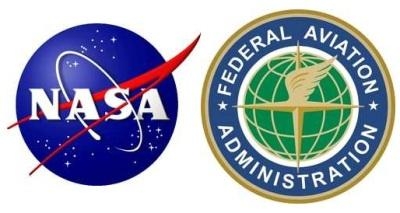Tue, Jun 19, 2012
Agencies To Coordinate Standards For Human Space Transportation
The FAA and NASA have signed an historic agreement to coordinate standards for commercial space travel of government and non-government astronauts to and from low-Earth orbit and the International Space Station (ISS). The two agencies will collaborate to expand efforts that provide a stable framework for the U.S. space industry, avoid conflicting requirements and multiple sets of standards, and advance both public and crew safety.

The Memorandum of Understanding (MOU) signed Monday by the two agencies establishes policy for operational missions to the space station. Commercial providers will be required to obtain a license from the FAA for public safety. Crew safety and mission assurance will be NASA's responsibility. This approach allows both agencies to incorporate experience and lessons learned as progress is made.
“This important agreement between the FAA and NASA will advance our shared goals in commercial space travel,” said U.S. Transportation Secretary Ray LaHood. “Working together, we will assure clear, consistent standards for the industry.”
"This agreement is the next step in bringing the business of launching Americans back to American soil," Charles Bolden, NASA administrator said. "We are fostering private sector innovation while maintaining high standards of safety and reliability to re-establish U.S.-crewed access to low-Earth orbit, in-sourcing work to American companies and encouraging the development of dynamic and cost-effective spaceflight capabilities built to last."
NASA's Commercial Crew Program aims to facilitate development of a U.S. commercial crew space transportation capability with the goal of achieving safe, reliable and cost-effective access to and from low-Earth orbit and the International Space Station. The policy established in the MOU clarifies for potential commercial providers the regulatory environment for operational missions to the orbiting laboratory. It also ensures that the two agencies will have compatible processes for ensuring public safety.
The FAA is responsible for regulating and licensing all U.S. private companies and individuals involved in commercial space transportation. To date, the FAA Office of Commercial Space Transportation has licensed 207 successful launches, including two non-orbital commercial human space flights in 2004 and the recent first launch to the ISS and re-entry of a non-manned commercial spacecraft. In addition, the agreement addresses proper protocols for implementation, financial obligations, liability, free exchange of data and information, and other administrative obligations between the FAA and NASA.
More News
Airbus Racer Demonstrator Makes Inaugural Flight Airbus Helicopters' ambitious Racer demonstrator has achieved its inaugural flight as part of the Clean Sky 2 initiative, a corners>[...]
A little Bit Quieter, Said Testers, But in the End it's Still a DA40 Diamond Aircraft recently completed a little pilot project with Lufthansa Aviation Training, putting a pair of >[...]
Line Up And Wait (LUAW) Used by ATC to inform a pilot to taxi onto the departure runway to line up and wait. It is not authorization for takeoff. It is used when takeoff clearance >[...]
Contributing To The Accident Was The Pilot’s Use Of Methamphetamine... Analysis: The pilot departed on a local flight to perform low-altitude maneuvers in a nearby desert val>[...]
From 2015 (YouTube Version): Overcoming Obstacles To Achieve Their Dreams… At EAA AirVenture 2015, FedEx arrived with one of their Airbus freight-hauling aircraft and placed>[...]
 Airbus Racer Helicopter Demonstrator First Flight Part of Clean Sky 2 Initiative
Airbus Racer Helicopter Demonstrator First Flight Part of Clean Sky 2 Initiative Diamond's Electric DA40 Finds Fans at Dübendorf
Diamond's Electric DA40 Finds Fans at Dübendorf ANN's Daily Aero-Term (04.23.24): Line Up And Wait (LUAW)
ANN's Daily Aero-Term (04.23.24): Line Up And Wait (LUAW) NTSB Final Report: Extra Flugzeugbau GMBH EA300/L
NTSB Final Report: Extra Flugzeugbau GMBH EA300/L Classic Aero-TV: 'Never Give Up' - Advice From Two of FedEx's Female Captains
Classic Aero-TV: 'Never Give Up' - Advice From Two of FedEx's Female Captains



